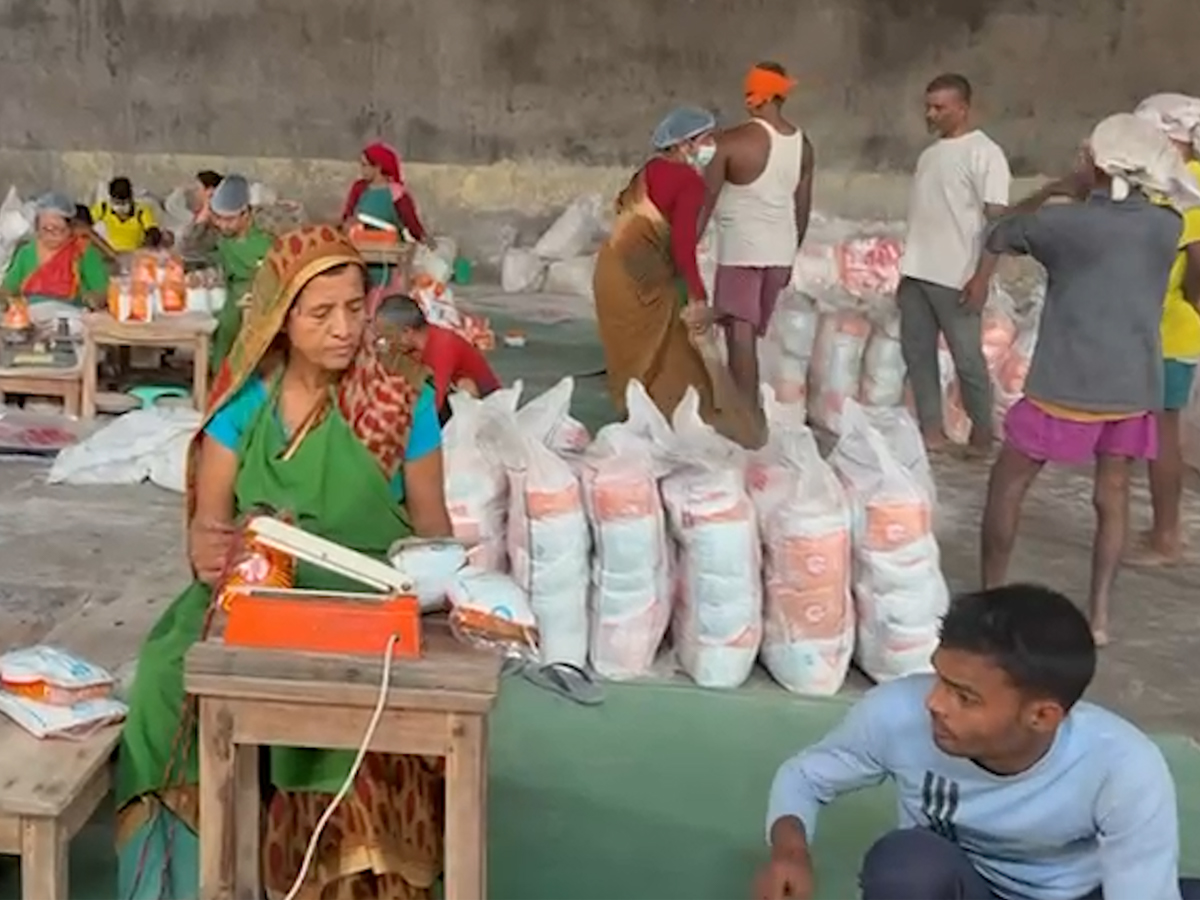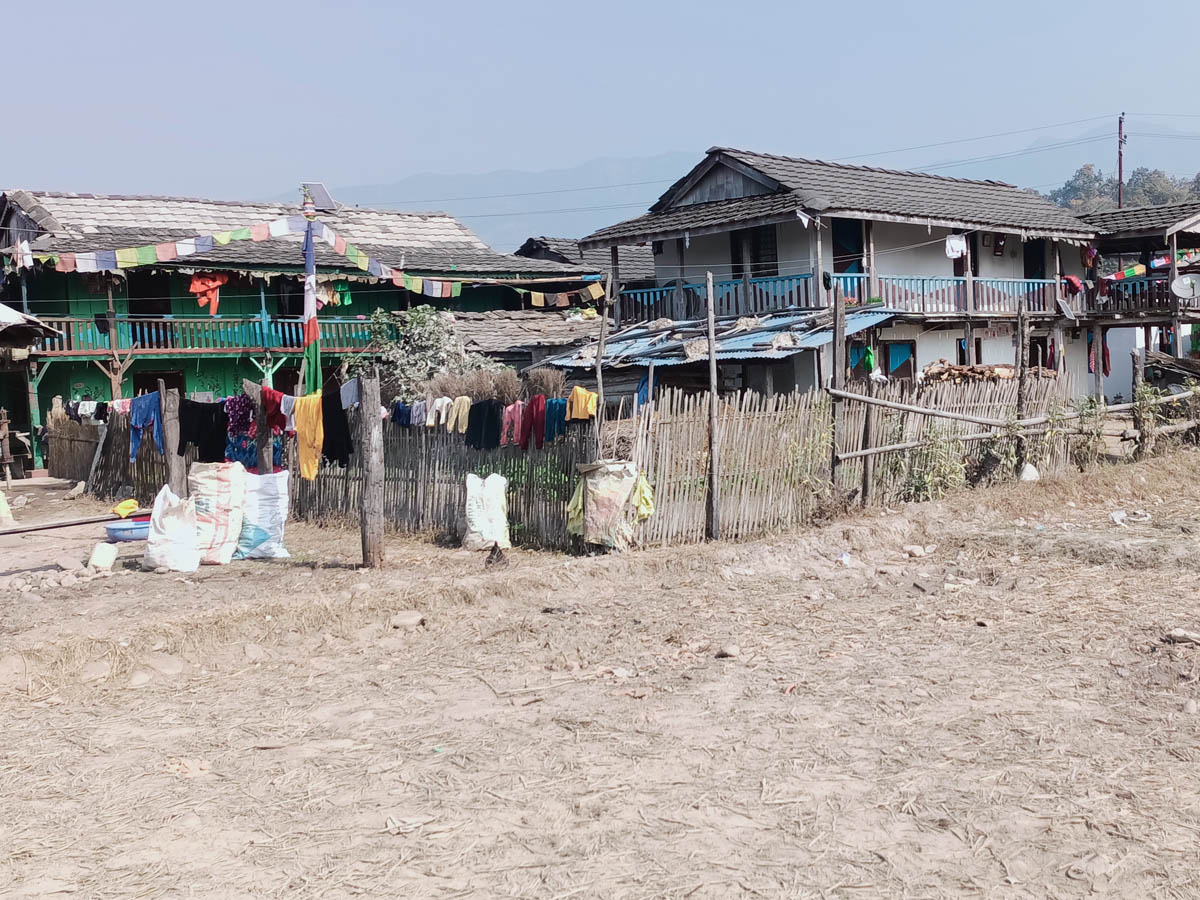The vision statement was ambitious, brimming with promises: to create ample employment opportunities within the country, to optimally utilize the available human resources, to ensure minimum employment for all, to foster a culture of respect for labor, and to end compulsive foreign employment, among other goals. On February 8, 2019, the Council of Ministers unveiled the Prime Minister Employment Program Operation Directives 2019, codifying these aspirations. A week later, on February 15, 2019, the Prime Minister Employment Program (PMEP) was launched nationwide.
 The announcement, particularly the promise of ending compulsive foreign employment, ignited a wave of hope. Citizens were enthusiastic, anticipating at least 100 days of employment for the jobless as declared by the government. The government touted it as a significant achievement, intended for implementation at the local, provincial and federal levels.
The announcement, particularly the promise of ending compulsive foreign employment, ignited a wave of hope. Citizens were enthusiastic, anticipating at least 100 days of employment for the jobless as declared by the government. The government touted it as a significant achievement, intended for implementation at the local, provincial and federal levels.
However, the stated objective of uplifting the living standards of the poor and marginalized remained largely unfulfilled. The target community, those most in need, did not reap the benefits of the program. Instead, it inadvertently served as a means for the relatively better-off to reap economic gains.
Employment, Not for the Poor
Biru Tamang from Gokarneshwor Municipality-1, Kathmandu, was among those who eagerly awaited the PMEP's implementation. He walked 12 kilometers to the Ward office to apply for a job, only to be met with disappointment. "I spent around Rs 2,000 on transportation to reach the ward office," he recounted. "I applied because I was told the program was designed for the poor and marginalized." However, he soon realized that access to power, rather than need, determined eligibility.
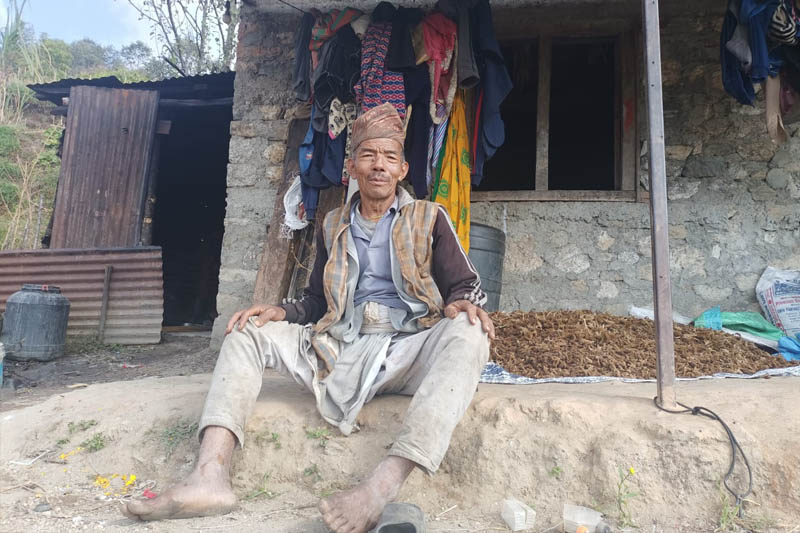
Biru, father to four children (one son and three daughters), is a construction laborer, and his wife works as a wage laborer. Their possessions are limited to a small piece of land and a buffalo. They toil tirelessly to provide for their family and ensure their children's well-being, yet they reside in a modest hut. Despite their dire circumstances, none of the family members benefited from the PMEP. Instead, Rajendra Tamang, a resident of the same neighborhood, was selected for the program. Ironically, Rajendra, a retired Indian Army soldier and the ambulance driver at the Municipality office, owns a three-story concrete house.
Kalpana Tamang and her husband, impoverished and unemployed, are among those who applied for PMEP but were denied work opportunities. As parents of two children, they harbored the sincere hope of securing employment. "We believed we would be guaranteed at least 100 days of work per year," Kalpana remarked. "We envisioned a means to sustain our livelihood and ensure our children's education. However, our hopes were dashed."
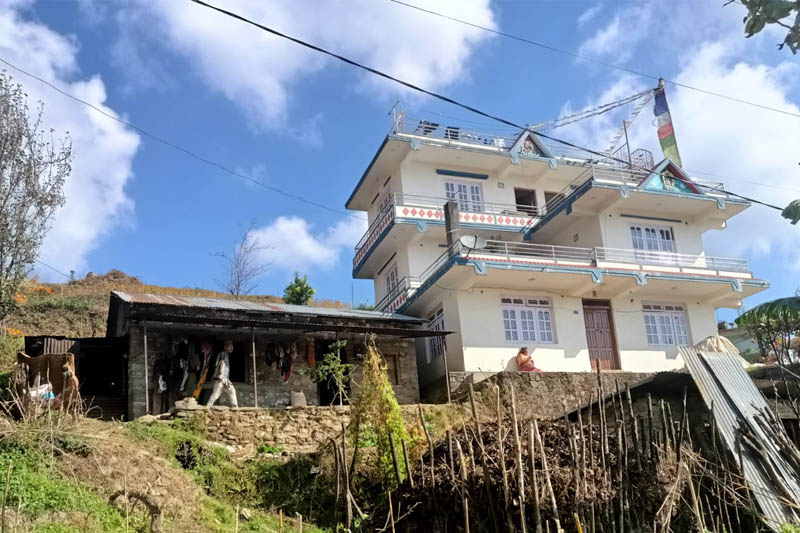
While Biru and Kalpana faced significant hurdles in their pursuit of PMEP employment, others appear to have secured positions with surprising ease, sometimes even without actively seeking them.
Mina Tamang, 32, from Gokarneshwor Municipality-1, Chilaune, Kathmandu, was among the fortunate ones to secure work under PMEP the year it was implemented in the municipality. She benefited from PMEP for two consecutive fiscal years. She learned about the employment opportunity when Ram Manandhar, the then ward chair of Gokarneshwor-1, informed her about the program and encouraged her to apply. “The ward chair said it was a program to provide employment to unemployed youths and asked me to apply. I did, and I got the job,” she said.
Mina was living in a rented room in Sundarijal, a central urban settlement, to educate her two sons. Once enrolled in the PMEP, she received 15 days of work, which involved picking up garbage, weeding and cleaning drains along the stretch from Sundarijal Bus Park to the Naya Pati bridge. A total of 15 people, including her, were assigned this work in Sundarijal. She received similar work for the second time – thanks to Manandhar – for 20 days.
Mina’s husband is employed in Dubai. “Whatever my husband earns and sends home is not enough for my children’s education. I managed our daily expenses with what I earned,” she said.
However, the locals claim she is among the better-off residents in the community.
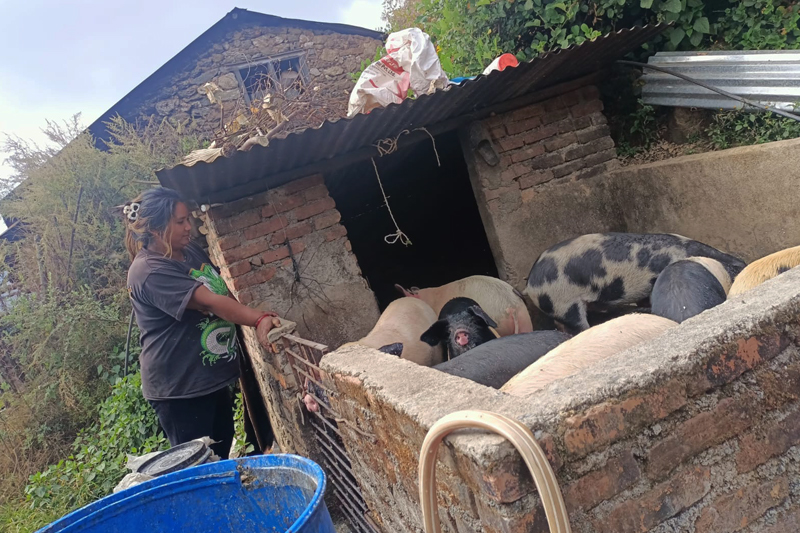
Many others have benefited twice from the PMEP. A significant portion of the beneficiaries belong to a demographic that hardly aligns with the program's intended target group: those with established homes, children enrolled in private schools, and spouses employed abroad. Rajani Tamang, 35, exemplifies this discrepancy. Despite owning a home, sending her children to private school, and having her husband employed overseas, she received PMEP benefits. "I am unaware of who initiated this program," she admitted. "Someone suggested I apply, and I did so, although I am unemployed myself."
Shyam Sundar Tamang, 43, another beneficiary from a more affluent background, worked in Saudi Arabia for over 15 years and operates a grocery store from his home. He secured PMEP employment due to his alleged connections with municipal officials. He was even offered work for the second consecutive fiscal year, an opportunity he declined.

While individuals like Rajani and Shyam Sundar benefited twice from the program, those in genuine need, such as Biru and Kalpana, were denied any opportunity. Although these beneficiaries may not be considered wealthy, they do not strictly adhere to the directive's criteria, which stipulates that beneficiaries must be unemployed and belong to economically disadvantaged segments of society.
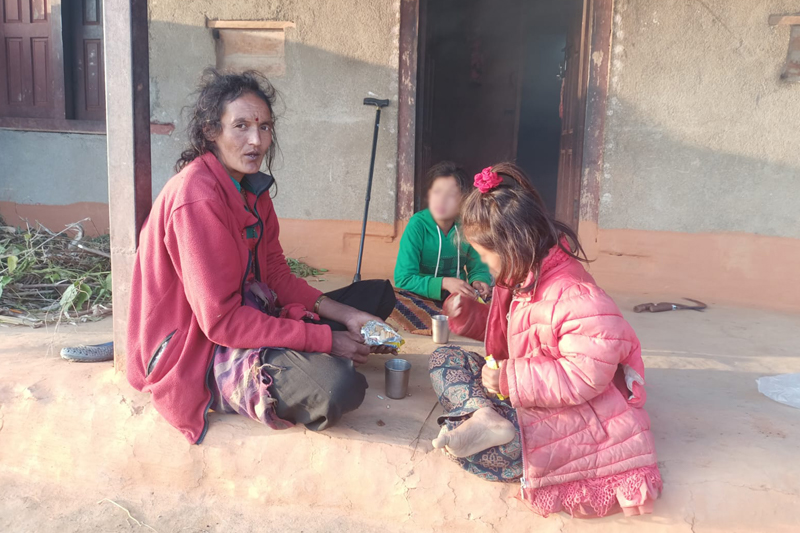
Alarmingly, the target group often remains unaware of programs like PMEP. Kamala Bokhati, 35, who has sole responsibility for her family after her husband was paralyzed four years ago, exemplifies this predicament. "The harvest from my small plot of land is insufficient to sustain my family for even three months," she lamented. "For me, the PMEP is like a bael fruit for a crow," a proverbial expression signifying an unattainable desire.
100 Days of Employment: A Sham
Ram Manandhar, the then ward chair, recommended 10 days of employment at a daily wage of 800 rupees for everyone, regardless of whether they had applied. Local resident Som Tamang stated that Manandhar recommended both the well-off and the underprivileged. "Although it was announced that employment would only be provided to applicants, it was later granted to everyone – business owners, those already employed, and even up to three members from a single family," Tamang explained. He added that because employment was given to both applicants and non-applicants, no one received the full 100 days of work. "We only got 10 days of employment instead of 100. If we had received 100 days of work, we might have earned a little more money."

Ram Manandhar, elected ward chair in the 2017 local elections as a Nepali Congress representative, unfairly distributed employment within his core constituency, according to Asmita Khatri Pokhrel, a right-to-information social activist. Locals suggest his motive was reelection in 2022, and to that end, he prioritized his constituency during project selection. Manandhar lost the 2022 election. He denies recommending employment for anyone who did not apply.
No vote, no employment
Dwarika Shrestha, from the CPN-UML, was elected ward chair in the 2022 elections. During his term, none of those who benefited from the Prime Minister Employment Program (PMEP) under Manandhar's tenure were included, despite their applications. Shrestha replicated Manandhar's actions by prioritizing individuals from his core constituency for the employment program. Darji Tamang, former VDC deputy chair, stated, "Dwarika Shrestha prioritized the village with the majority of UML supporters for the employment program. He prioritized the areas where he received the most votes." Shrestha denies this, claiming he focused on other areas to ensure inclusivity. "Locations may have changed, but we provided employment to those genuinely unemployed," he said.
None of those who applied for employment after Shrestha became ward chair – Meena, Rojina, Rambahadur, Maili and Darji Tamang – were included. Locals report that elected leaders prioritize their vote banks for programs like the PMEP, as well as budget allocation and development projects. The PMEP appears to have been used for vote bank politics. In Fiscal Year 2023/24, 40 people were recommended for the program from five of the municipality's nine wards, even though these five wards comprise 67% of the municipality's remote areas. Twelve were listed from ward 1, while eight were listed from each of the other four wards. Ward 1 includes a settlement within the national park with poor road infrastructure. Kumar Lama, ward secretary for ward 1, believes more people from his ward should receive employment. "Instead of allocating budgets to developed settlements, we need to provide employment where it's needed," Lama stated. "However, the executive meeting decided to provide employment to eight people from each ward."
Suresh Regmi, the municipality's employment coordinator, states that only five wards have been included in the program, adding that implementing the PMEP and listing individuals according to local procedures has proven challenging. The Right to Employment Act (2018) defines "unemployed person" as a citizen between the ages of 18 and 59 who has not been employed for at least one hundred days in a fiscal year or is not involved in self-employment generating a minimum income. However, the PMEP's own annual reports indicate that local levels are providing employment without properly assessing applications. The report notes that concerned ward offices list all applicants without vetting, disregarding the provisions of the Prioritization Guidelines for Unemployed People (2018). The report also cites instances of political interference in the program, including denying employment to deserving individuals in need.
Government reports term it a failed project
The constitution of Nepal (Article 33 (1)) enshrines the right to employment for each citizen. The Right to Employment Act (2018), Rules Relating to Right to Employment (2018) is among the legislations enacted to ensure that constitutional provision. The Prime Minister Employment Program (PMEP) was launched in 2019 with the goal of ensuring minimum employment and thereby providing social security to the people, with the goal of providing employment of at least 100 days a year. As a rule, any unemployed individual from each of the 753 local governments is eligible to apply for employment under the program, with one application allowed per family.
It was proclaimed that a minimum 100 days of employment will be ensured for 200,000 persons in Fiscal Year 2020/21. Within 10 months of that fiscal year a total of 753,237 persons were listed as unemployed from among those who applied for the program. According to the government’s report, only 93,427 persons, 12.4 % of those listed, found employment. Again, the beneficiaries were not granted 100 days of employment as proclaimed, as per person employment days on an average stood at only 15.57.
In Fiscal Year 2020/21, a substantial allocation of 11.6 billion rupees was made to local governments for the program. However, a significant number, 153 out of 753, failed to implement any programs. Despite this substantial budget, only 400 million rupees (3.53 %) were utilized, highlighting a stark discrepancy between allocated funds and actual expenditure.
The PMEP's performance in previous fiscal years has been similarly underwhelming. In 2018/19, only 10.34 % (175,909 out of 1,701,551) of the listed individuals received employment for an average of 13 days. In 2019/20, this figure rose slightly to 28.42 % (105,365 out of 370,734), with beneficiaries receiving an average of 16 days of employment. Notably, only 495 (65.42 %) of local governments implemented the program that year. In 2021/22, a mere 16,308 out of 708,245 listed individuals benefited. In 2022/23, the number increased to 91,685, while the current fiscal year witnessed a significant decline with only 2,315 individuals listed as potential beneficiaries, indicating a decline in public interest.
Over a six-year period (2018/19 to 2023/24), a substantial sum of 40 billion, 966 million, and 691 thousand rupees was allocated to provide seasonal employment to 715,132 individuals. However, the average employment duration for each individual was only 52 days, falling short of the program's ambitious goal of providing at least 100 days of employment to 200,000 individuals annually.
If you examine the Ministry of Labor's data, it becomes evident that youths are no longer drawn to this program. While as many as 1,333,000 youths applied for the program in 2018/19, the number dropped to 369,313 in 2019/20, further declining to 752,449 and 708,245 in the following years, respectively.
Labor expert Rameshwor Nepal explains that the primary objective of PMEP was to create sustainable employment in the long run, but this very goal was undermined during its implementation. According to him, the program fails to attract youths altogether. Moreover, even the few beneficiaries cannot depend on this employment to meet their families' basic needs.
Over the past three years, beneficiaries received an average of 13, 16 and 16 days of work per year. With a daily wage of Rs 517, a participant could earn no more than Rs 8,000 per annum – far too little for anything.
The PMEP also lists the names of the educated unemployed persons but there are no separate programs to ensure their employment. According to Nepal Labor Force Survey 2017/18, out of the total 2,922,000 educated youths, 1,250,000 (42.78 %) are jobless, which indicates the weaknesses on the part of the PMEP to address employment needs of the educated people. Though government reports point to the weaknesses and shortcomings of the program, no measure has been taken to address those shortcomings, according to Rameshwor Nepal.
The Right to Employment Act (2018) mandates that if the Government of Nepal fails to provide employment to individuals registered with Employment Service Centers, it is obligated to provide them with a livelihood allowance. This allowance is stipulated at 50% of the minimum wages for 100 days of employment, as determined by the Ministry, within a fiscal year. While the government allocates a budget for this purpose, it has yet to provide any livelihood allowance to eligible individuals. Furthermore, despite the legislation, hundreds of thousands registered with the program remain unemployed.
The budget allocated for the livelihood allowance was diverted to a target program for deprived citizens, implemented by local governments. The government justified this decision by arguing that providing a livelihood allowance could foster a sense of dependency on the state among youth. However, labor expert Nepal contends that this rationale contradicts the explicit provisions of the Right to Employment Act.
Reports from the Attorney General and the National Planning Commission have criticized the PMEP for its focus on menial tasks such as road and ditch cleaning, and the construction of school grounds and pathways, rather than promoting productive and investment-friendly ventures. These reports highlight that the actual employment provided to beneficiaries has fallen far short of the 100-day target, with an average of only 18 days of employment for approximately 250,000 individuals.
Furthermore, the reports identify several key shortcomings in the program's implementation. These include a lack of emphasis on agriculture and small enterprises in rural areas, inadequate remuneration limited to daily wages that fail to provide a sustainable livelihood, a mismatch between worker skills and assigned tasks, and high rates of worker attrition due to low wages. Additionally, the reports point to instances of local government officials employing individuals outside the designated list, violating program directives and procedures, and inflating employment figures while providing minimal actual work.
Economist Dr. Chandra Mani Adhikari contends that the PMEP has not been implemented as originally envisioned. He emphasizes the need for the program to align with sustainable skills development and production, stating, "If we fail to harness the potential of our youth human resources through appropriate policies and skills-based, business-oriented programs, unemployment rates will continue to rise." Recognizing the multifaceted benefits of employment reduction, Dr. Adhikari highlights its crucial role in poverty alleviation, hunger eradication, and overall economic development. He advocates for a ‘one-door policy’ to streamline employment generation efforts, emphasizing the long-term benefits of integrated programs for national development. "Employment generation is instrumental in achieving sustainable development goals," he concludes.
Flop shows
The government has introduced approximately a dozen programs at various times with the objective of creating jobs and retaining youth within the country. However, none of these programs appear to have been effective. Consider the Youth and Small Entrepreneur Self Employment Fund (YSESEF), a program introduced by the government in 2008 when Dr. Baburam Bhattarai was Finance Minister. Bhattarai's stated goal was to provide accessible business loans to young people and encourage them to pursue entrepreneurship. The Fund was established in 2008 but only became operational in 2011. It has been widely criticized as a scheme to distribute funds to party loyalists and cadres. Although the Fund aimed to provide employment to 50,000 youths annually, this target was not met and has since been reduced to 12,000.
Similarly, the Prime Minister Agriculture Modernization Project, which aimed to attract young people to agriculture, promote local employment, and prevent youth migration, has also achieved virtually nothing. Data from the Ministry of Finance itself indicates the program's ineffectiveness. "Because this was implemented as a small-scale project, it became ineffective," according to economist Dr. Adhikari. The Auditor General's report states that while the government has been running employment promotion programs since 1998, the PMEP was introduced without any review of the effectiveness and current status of those prior programs.
Alleviating poverty, creating dignified employment, and encouraging youth employment are among the major goals of the Sustainable Development Goals (2030). Nepal aims to eradicate all forms of poverty through employment, increase per capita income from US$766 in 2015 to US$2500 by 2030, and, based on its poverty alleviation and income generation efforts, transform the country into a middle-income nation by 2030. The plan also aims to reduce overall unemployment from 27.8% to 10%, eliminate all forms of child labor, and decrease youth unemployment from 35.8% to 10%.
The government, however, has been unable to retain youth within the country. Data reveals that as many as 200,000 youths leave the country each month for foreign employment. According to data from the Department of Foreign Employment, 241,583 individuals obtained labor permits from July to August of the current Fiscal Year 2024/25. This figure represents an increase compared to the same period last year, when 206,316 labor permits were issued. The total number of labor permits issued in 2023/24 was 741,397. Government data indicates that since the political changes of 2007, a total of 5.8 million youths have obtained labor permits and left the country. This exodus, argues Som Luitel, a labor and migration expert and advocate, is because government employment programs in Nepal have not addressed the needs of young people and have failed to consider the importance of skills development. "This is the result of the government's inability to identify the target group for these programs," he stated.
If, instead of implementing small-scale programs that merely appear to keep young people occupied, the government designed programs to foster self-reliance, these programs would garner greater interest from youth. "Young people don't need minimal employment; they need consistent, year-round employment that builds their skills," Luitel explained. This youth brain drain has not only resulted in a waste of resources but has also left those who emigrate feeling unhappy and disconnected from their homeland. This exodus has had a multifaceted impact on Nepali society and culture.
Will it be better in future?
Neither the number of individuals to be employed nor the duration of unemployment has been determined. The stated objective of providing 100 days of employment has never been achieved. However, government officials do not acknowledge this. Basanta Bahadur Bohara, Under-Secretary at the PMEP, under the Ministry of Labor, Employment and Social Security, claims the program has been effective for underprivileged and impoverished families. "The program is intended to provide employment to the poor and deprived. People misunderstood it as a scheme providing jobs for 365 days. We failed to clarify that it is actually a social security program," he said.
With a budget sufficient for only 750,000 individuals, it has not been possible to provide employment to everyone registered. "The program was announced without sufficient preparation, making implementation challenging," Bohara explained. "Therefore, we could initially offer employment for only 13 days on average." He admits that much of the work performed with this budget was trivial, such as cleaning roads, weeding, and chasing monkeys. "It is natural, therefore, for people to criticize the project, given that 41 billion rupees was spent," he said. "However, we have been making changes in recent years."
The PMEP aims to provide employment to 200,000 individuals annually. To achieve this, each municipality must first compile a list of unemployed persons. Applications must be submitted by mid-March, and by mid-April, the municipality must issue a recommendation for each listed person, stating that they are unemployed and lack the means to support their family for three months of the year. However, although the program is intended for the extremely poor, even relatively well-off individuals have admitted to benefiting from it. "This is because the local municipalities are too lenient and flexible," Bohara explained. "Now, we will address this through software."
The program's effectiveness has also been hampered by a lack of ownership from local governments. The objectives of creating productive jobs and providing employment to educated unemployed individuals remain unmet. Budget constraints are another obstacle. At least 2.017 trillion billion rupees is needed to guarantee minimum employment. "Employment has only been provided to the extent that the budget allows," Bohara stated. "Regardless of the number of jobs created, it has helped the poor and deprived." He claims the program has been more effective in remote areas than in urban areas, and those municipalities that have fully embraced the program have achieved 90% effectiveness. "Local governments can implement the program more sustainably, create internal employment, and generate more resources," he suggested.
According to him, efforts have been made to align the program with SDG (2030) and integrate it with the National Employment Information System, thus restructuring the PMEP.
As per Bohara, the new policy draft proposes to produce skilled workers, instill market-relevant skills, integrate skilled resources with the private sector, and create sustainable employment. The government has been reviewing the program annually, and the budget will be reviewed in the coming years to improve implementation. The plan to create an Internal Employment Promotion Division within the Ministry is in its final stages.
Cover photo - Local residents working at the Thakurbaba Municipality-6, Bardiya, under the Prime Minister's Employment Program for 2079/080 B.S. Photo: Prime Minister Employment Program
Please adhere to our republishing policy if you'd like to republish this story. You can find the guidelines here.

